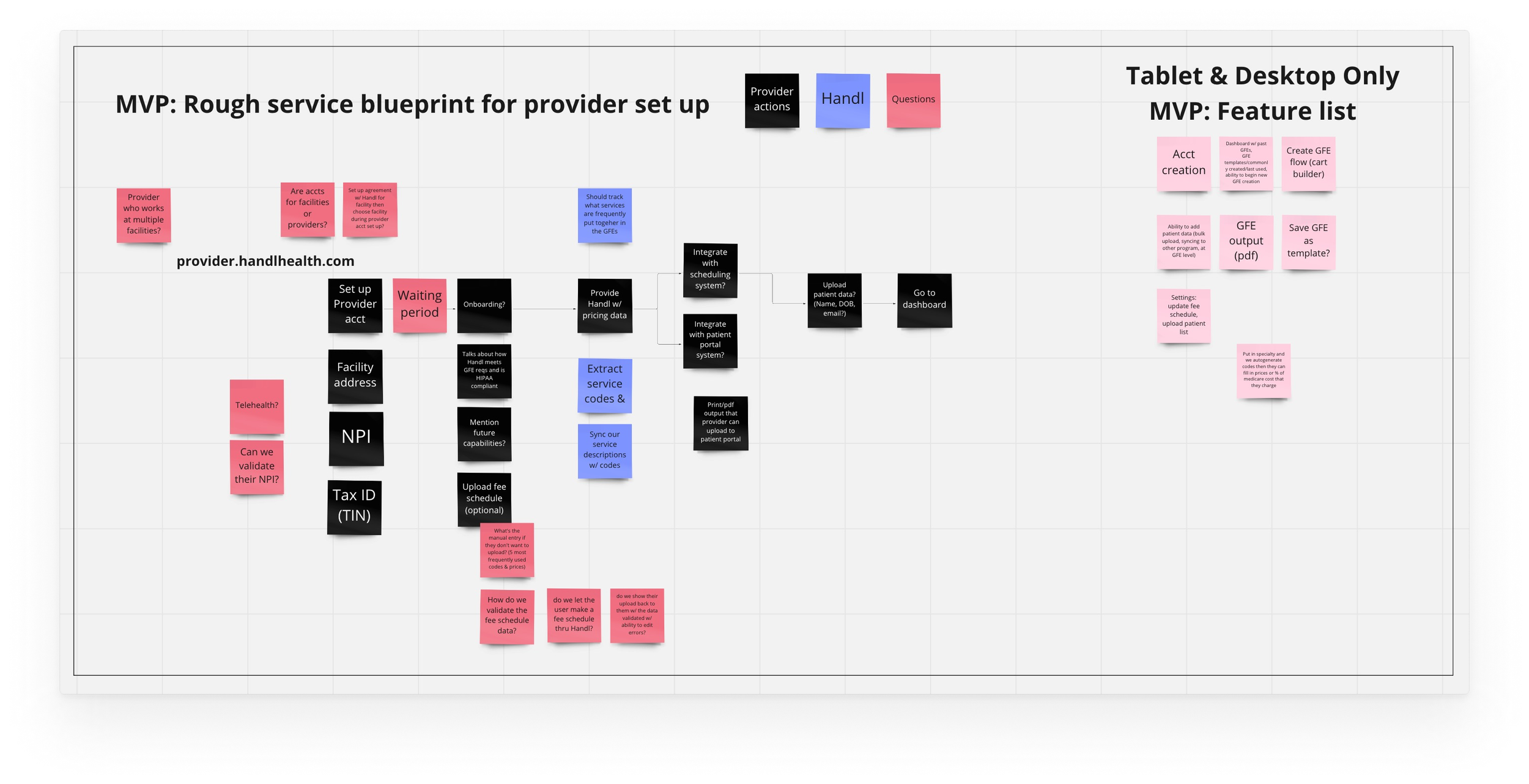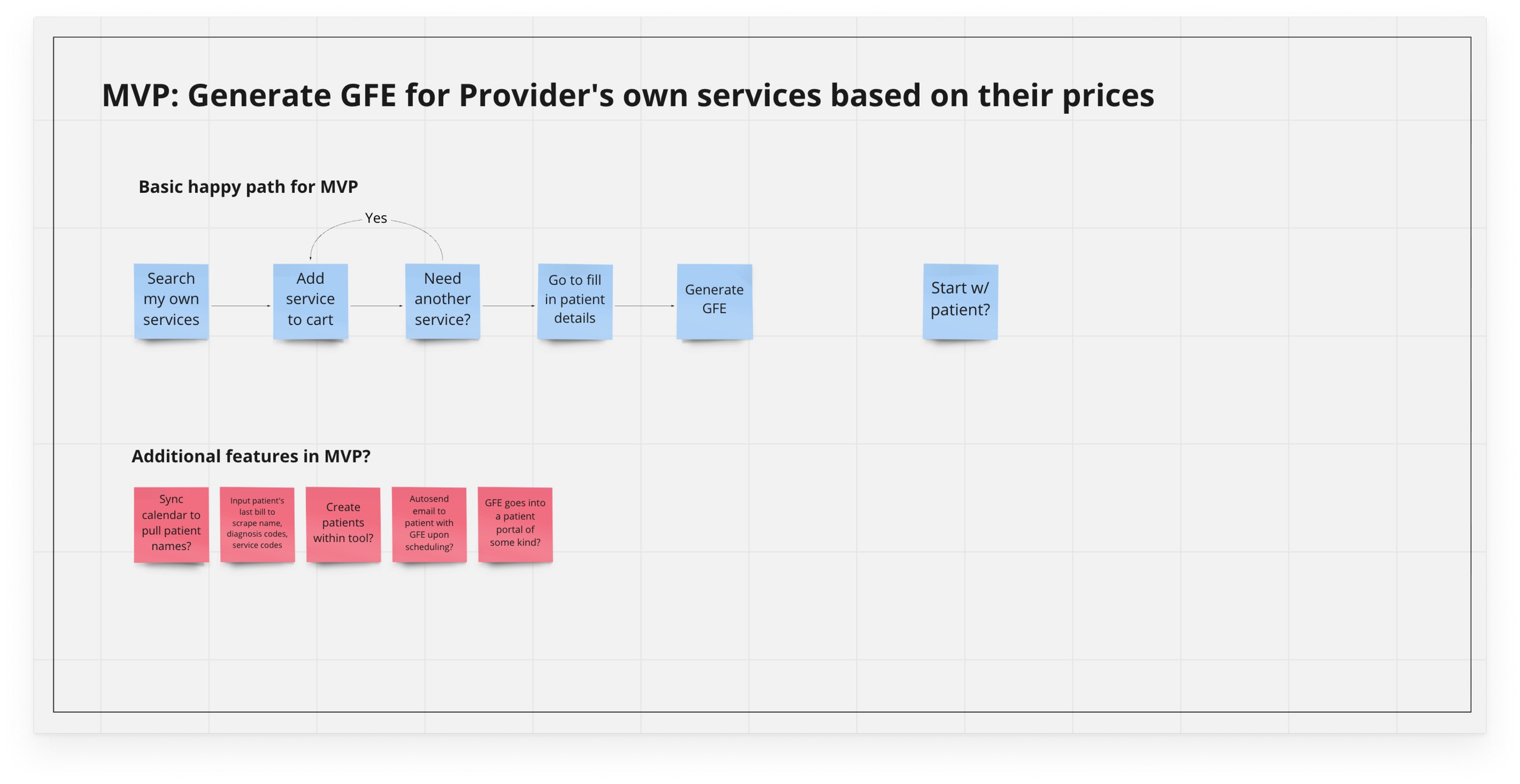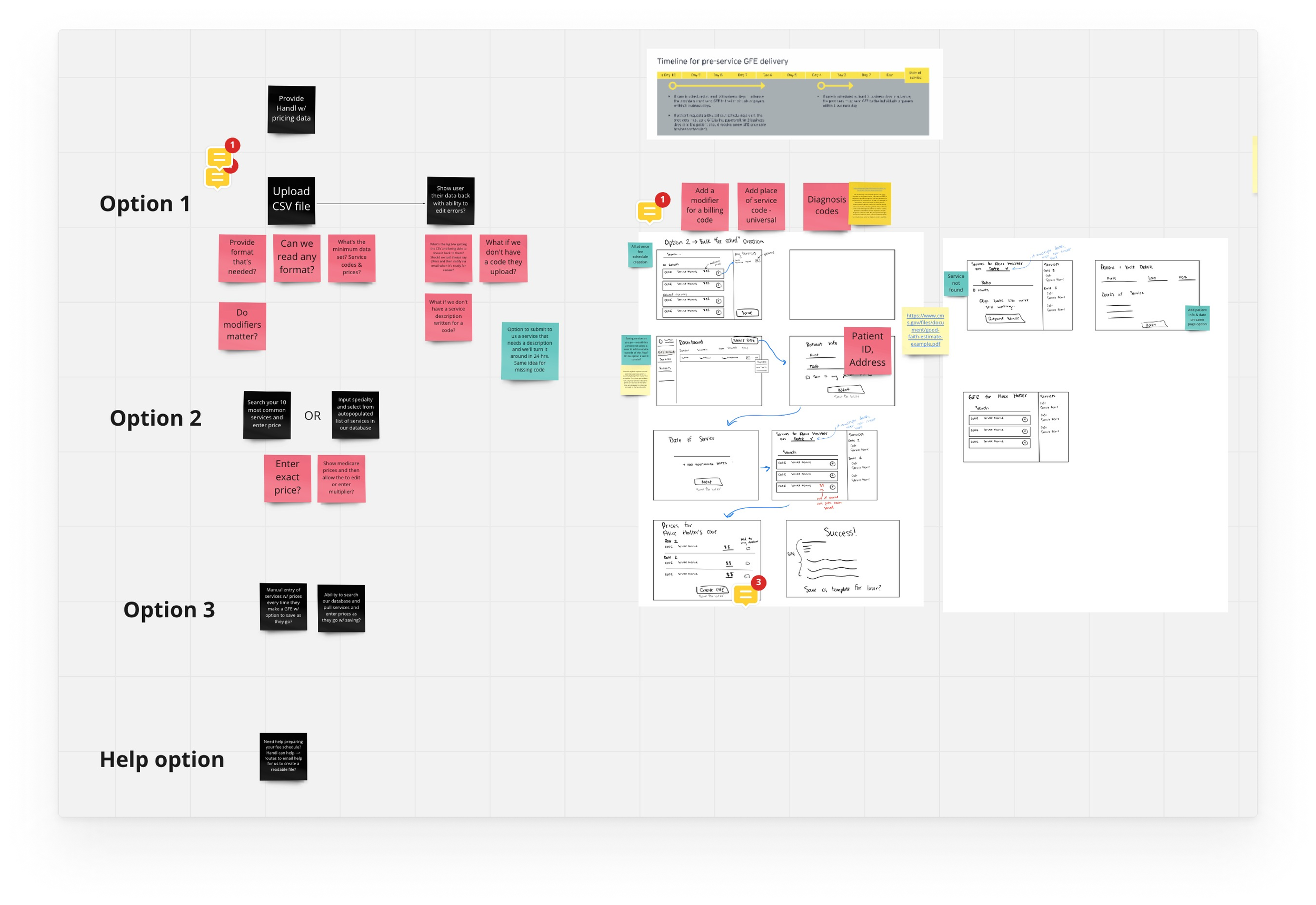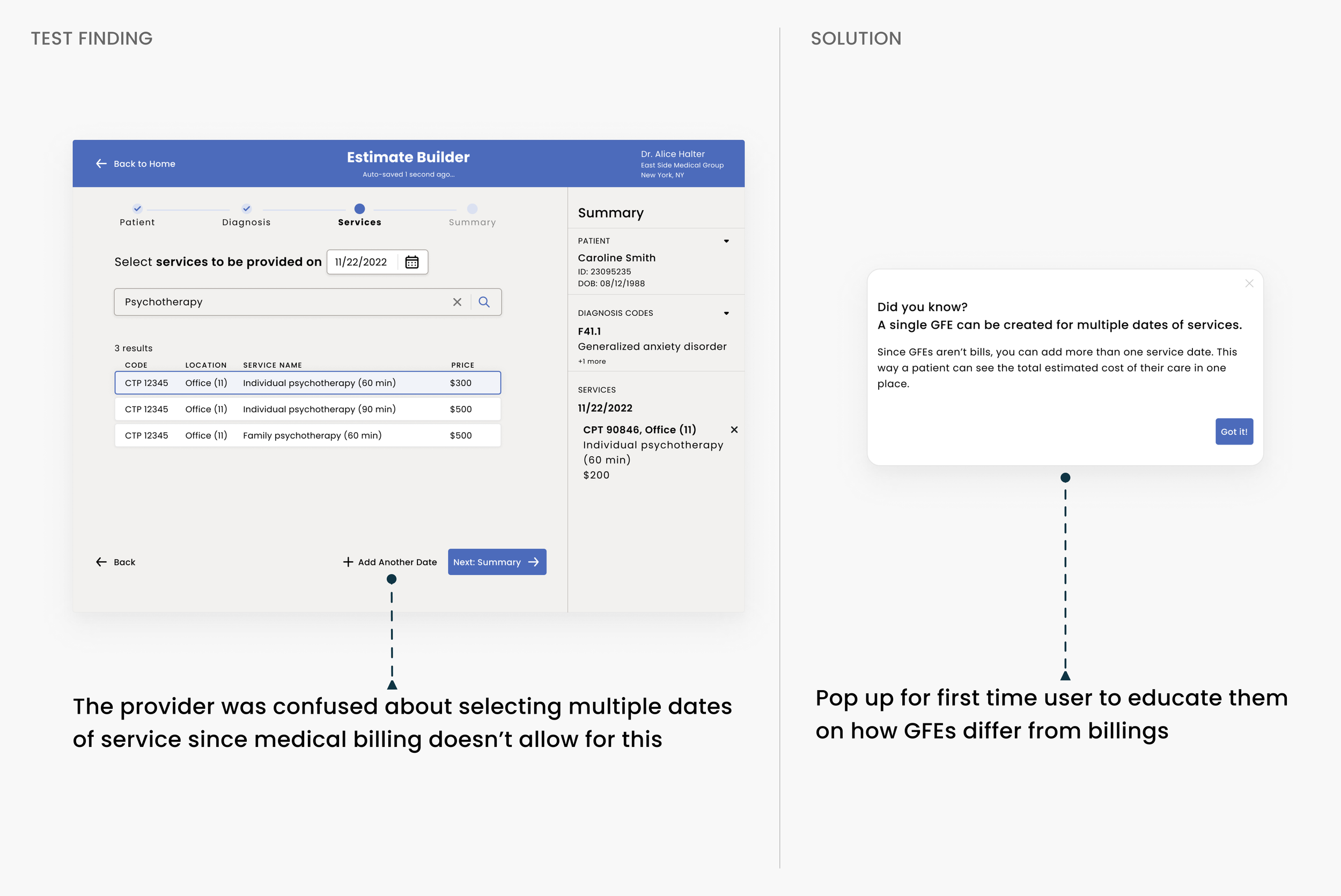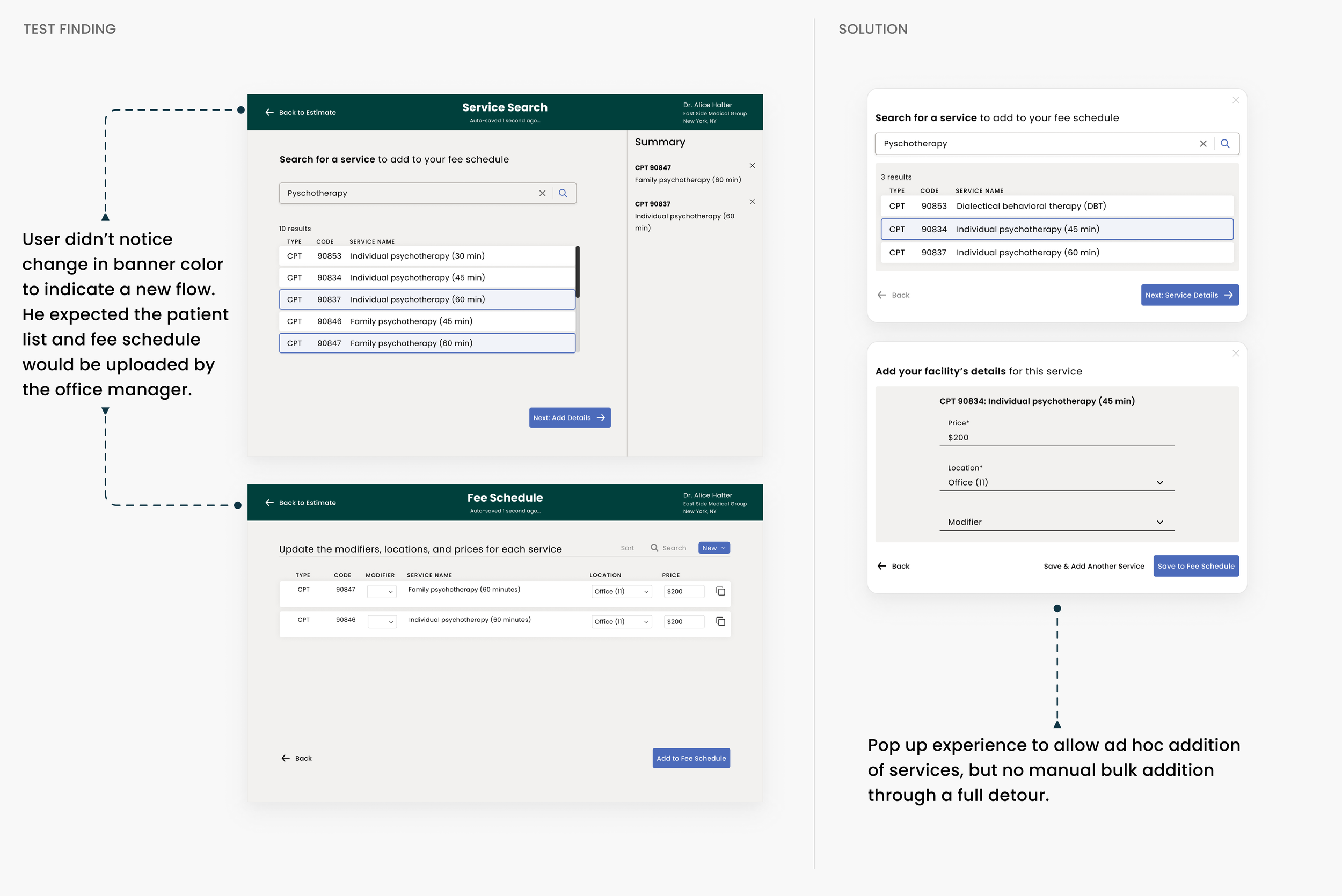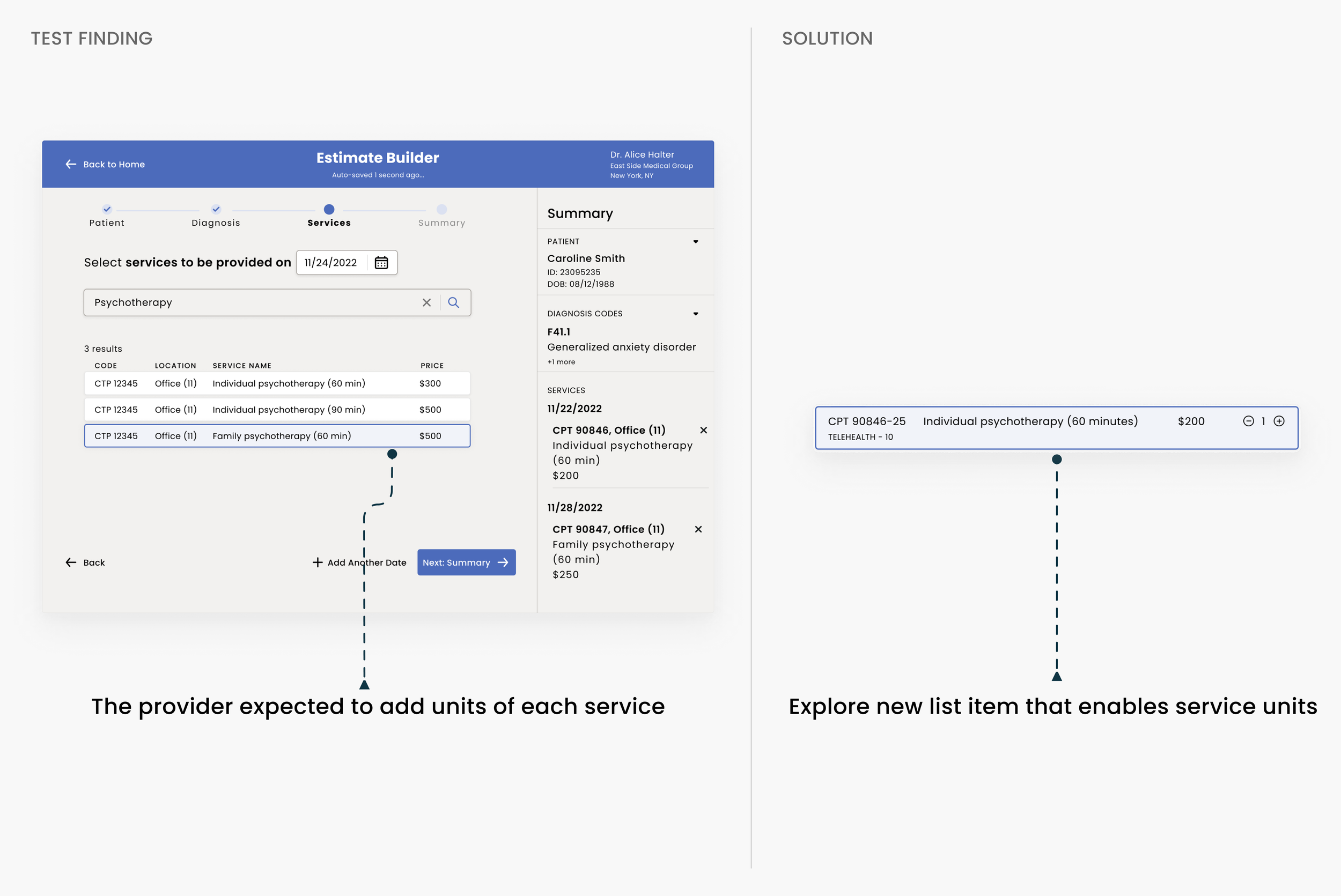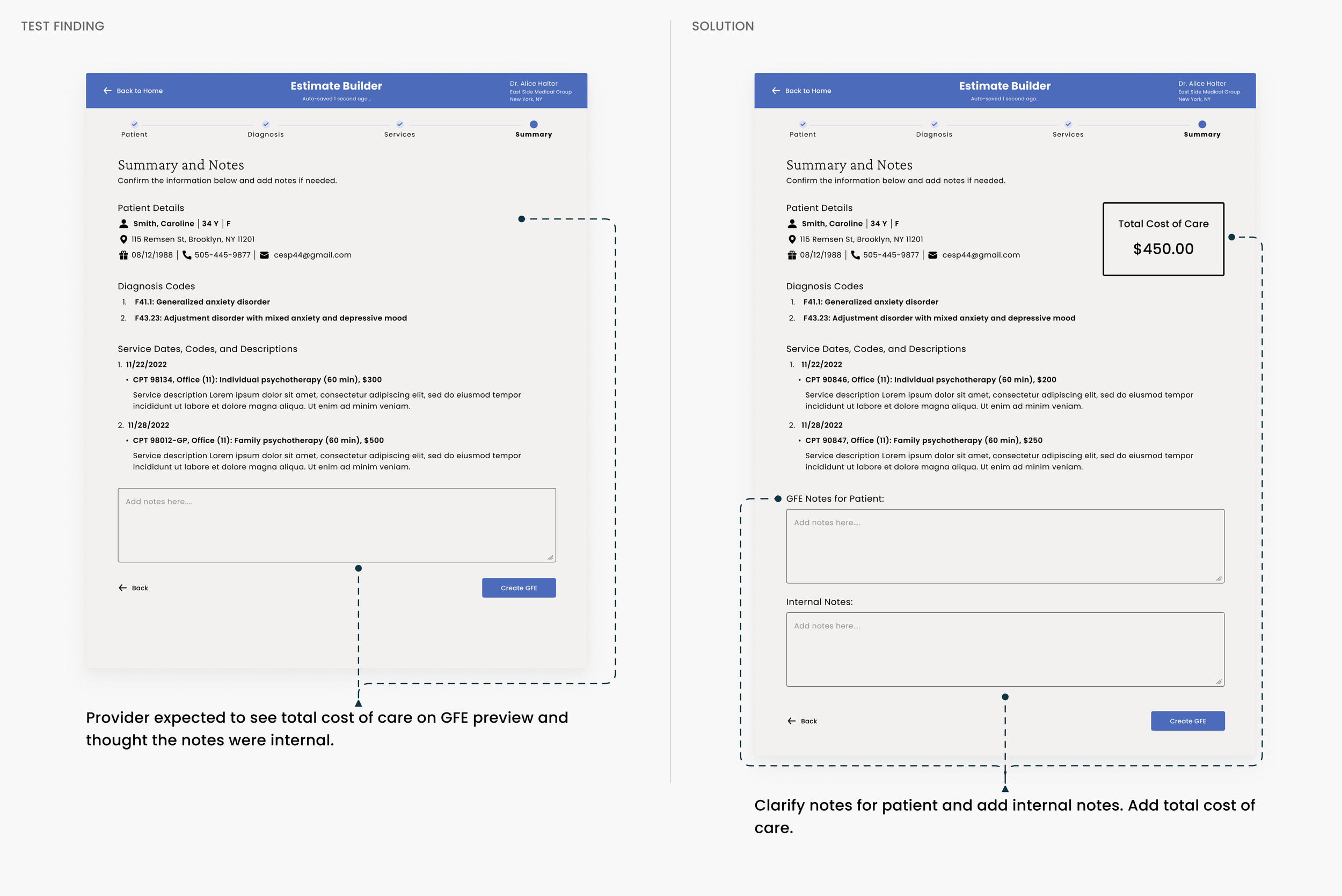Design strategy and execution in a 46B industry to improve pricing transparency from provider to patient
Final designs
The Challenge
Handl Health is a startup founded in 2019, tackling one of America’s greatest endemic problems — its own healthcare system. With new legislation mandating healthcare providers give cost estimates to patients, we saw an opportunity to integrate estimates into providers’ workflows and establish Handl Health as their go-to solution for future price transparency needs.
We began with the hypothesis that small private practices need a way to create Good Faith Estimates so they can abide by federal legislation and help patients plan for the cost of care.
How might we make creating a cost estimate a seamless part providers’ responsibilities?



